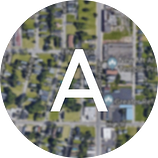Member-only story
How Google’s Bad Data Wiped a Neighborhood off the Map
Inside the big, twisted industry of neighborhood data collection
 Annette Lott sat through the meeting with studied patience, waiting for the moment city officials would open the floor and she could ask them about Google Maps.
Annette Lott sat through the meeting with studied patience, waiting for the moment city officials would open the floor and she could ask them about Google Maps.
It was late spring in Buffalo, New York, in 2015 — a season that was unusually hot that year, and heated. The wood-paneled meeting room at Gethsemane Grape Street Baptist Church hummed with anxious homeowners from Buffalo’s Fruit Belt neighborhood, where a burgeoning, billion-dollar medical complex threatened to displace them.
Poor folks had called the Fruit Belt home for more than 150 years — first German immigrants, then African-Americans. Lott’s parents bought their pale turquoise two-story house in 1955, moving north from Bluefield, West Virginia, to help build up a community that would become the heart of Buffalo’s black working class.
Now that community was under threat — or so it seemed to Lott. The 66-year-old had Googled directions to her neighborhood and found that the app had changed the name of her community from the “Fruit Belt” to something called “Medical Park.”

